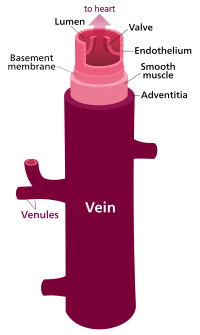
Tissue plasminogen activator vs heparin for locking central venous catheters between apheresis procedures
Sign Up to like & getrecommendations! Published in 2019 at "Journal of Clinical Apheresis"
DOI: 10.1002/jca.21697
Abstract: Central venous catheters (CVCs) for apheresis procedures require regular locking/flushes to maintain adequate flow rates. Literature comparing locking solutions for apheresis, where the time interval between procedures can be longer than for hemodialysis (many days… read more here.
Keywords: apheresis procedures; venous catheters; central venous; apheresis ... See more keywords

Bacterial colonization of non-permanent central venous catheters in hemodialysis dogs
Sign Up to like & getrecommendations! Published in 2020 at "Heliyon"
DOI: 10.1016/j.heliyon.2020.e03224
Abstract: Non-permanent central venous catheters (CVCs), are the most commonly used vascular access in veterinary patients undergoing hemodialysis. In human dialysis patients, CVC infection represents a common cause of morbidity and mortality. The aim of this… read more here.
Keywords: hemodialysis; non permanent; venous catheters; permanent central ... See more keywords

Tunneled central venous catheters in children with malignant and chronic diseases: A comparison of open vs. percutaneous implantation.
Sign Up to like & getrecommendations! Published in 2017 at "Journal of pediatric surgery"
DOI: 10.1016/j.jpedsurg.2017.01.045
Abstract: PURPOSE Tunneled central venous catheters (tCVCs) are routinely used for long-term venous access in children with cancer and chronic diseases. They may be inserted by surgical venous cut-down or percutaneously. The aim of this study… read more here.
Keywords: chronic diseases; venous catheters; group; central venous ... See more keywords

The appropriate frequency of dressing for percutaneous central venous catheters in preventing catheter-related blood stream infection in NICU - A randomized controlled trial.
Sign Up to like & getrecommendations! Published in 2021 at "Pediatrics and neonatology"
DOI: 10.1016/j.pedneo.2021.02.001
Abstract: BACKGROUND Complications of percutaneous central venous catheters (PCVCs) include catheter-related blood stream infection (CRBSI), occlusion, leakage, and phlebitis, which may lead to sepsis or prolonged hospitalization. The primary objective of this randomized controlled trial was… read more here.
Keywords: catheter; catheter related; venous catheters; group ... See more keywords

Central venous catheters: Indications, techniques, and complications.
Sign Up to like & getrecommendations! Published in 2019 at "Seminars in pediatric surgery"
DOI: 10.1053/j.sempedsurg.2019.01.005
Abstract: Central venous catheters (CVC) are commonplace in the management of critically ill patients and serve a variety of purposes. Venous access is important for the administration of fluid and medications as well as blood procurement… read more here.
Keywords: techniques complications; venous catheters; indications techniques; catheters indications ... See more keywords

Traditional Long-Term Central Venous Catheters Versus Transhepatic Venous Catheters in Infants and Young Children
Sign Up to like & getrecommendations! Published in 2017 at "Pediatric Critical Care Medicine"
DOI: 10.1097/pcc.0000000000001276
Abstract: Objectives: Children with congenital heart disease may require long-term central venous access for intensive care management; however, central venous access must also be preserved for future surgical and catheterization procedures. Transhepatic venous catheters may be… read more here.
Keywords: catheter; venous catheters; long term; central venous ... See more keywords

Cost-effectiveness Analysis of Peripherally Inserted Central Catheters Versus Central Venous Catheters for in-Hospital Parenteral Nutrition
Sign Up to like & getrecommendations! Published in 2022 at "Journal of Patient Safety"
DOI: 10.1097/pts.0000000000001028
Abstract: Objective Our objective was to evaluate the cost-effectiveness of the use of peripherally inserted central venous catheters (PICCs) by a vascular access team (VAT) versus central venous catheters (CVCs) for in-hospital total parenteral nutrition (TPN).… read more here.
Keywords: venous catheters; cost; central venous; effectiveness analysis ... See more keywords

Incidence of and risk factors for local complications of peripheral venous catheters in patients older than 70 years: Empirical research quantitative.
Sign Up to like & getrecommendations! Published in 2023 at "Journal of clinical nursing"
DOI: 10.1111/jocn.16732
Abstract: AIMS To assess the incidence density of local complications of peripheral venous catheters in patients aged 70 years and older, to identify risk factors for local complications of peripheral venous catheters, to describe microbiological epidemiology and… read more here.
Keywords: catheter; venous catheters; peripheral venous; risk factors ... See more keywords

Study protocol for a multicentre, randomised, controlled trial to assess the effectiveness of antimicrobial central venous catheters versus ordinary central venous catheters at reducing catheter related infections in critically ill Chinese patients
Sign Up to like & getrecommendations! Published in 2017 at "BMJ Open"
DOI: 10.1136/bmjopen-2017-016564
Abstract: Introduction Catheter use is associated with many complications and is an iatrogenic source of morbidity and mortality in intensive care units (ICU). The catheter being studied (Certofix Protect) was developed to reduce the risk of… read more here.
Keywords: catheter; trial; catheter related; venous catheters ... See more keywords

Anti-Candida activity of antimicrobial impregnated central venous catheters
Sign Up to like & getrecommendations! Published in 2017 at "Antimicrobial Resistance and Infection Control"
DOI: 10.1186/s13756-017-0269-x
Abstract: BackgroundWhenever the rate of central line-associated bloodstream infections (CLABSIs) remains high even after the implementation of preventive strategies, the use of chlorhexidine/silver sulfadiazine (CSS) or minocycline/rifampin (MR)-impregnated central venous catheters (CVCs) is currently recommended. Nevertheless,… read more here.
Keywords: impregnated central; venous catheters; cvcs; central venous ... See more keywords

Heparin Versus Normal Saline: Flushing Effectiveness in Managing Central Venous Catheters in Pediatric Patients With Cancer.
Sign Up to like & getrecommendations! Published in 2022 at "Clinical journal of oncology nursing"
DOI: 10.1188/22.cjon.300-307
Abstract: BACKGROUND There is insufficient evidence of the effects of intermittent flushing with normal saline versus heparin to prevent occlusion or increased alteplase use in pediatric patients with central venous catheters. OBJECTIVES The primary objective was… read more here.
Keywords: patients cancer; venous catheters; central venous; normal saline ... See more keywords